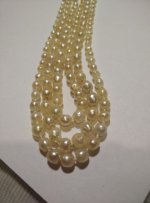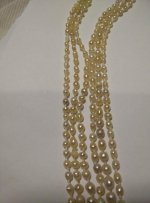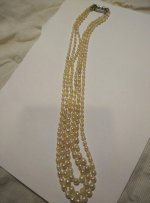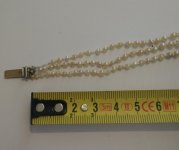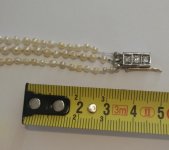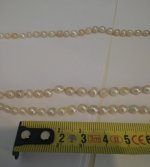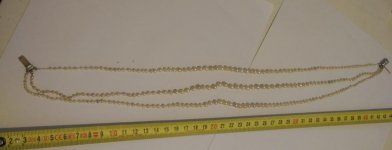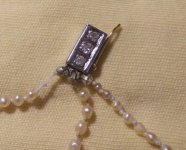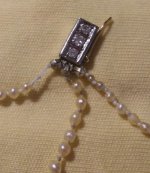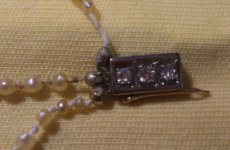I received this strand as a gift from my mother. She bought it at auction in 2003. The auction receipt says it is a triple strand of natural graduated pearls.
I took the pearls to my regular jeweler to restring them. She only did one strand -- the shortest one. She said it was very difficult to string the pearls and that the strand came out much, much shorter than it had been before stringing so she didn't want to do the other two strands. She made a bunch of knots at the ends to lengthen the strand enough to wear. She didn't seem to think it was worth investing money in it until the strands break.
My question is whether you think it is worth my looking around for a specialist stringer to have the whole thing restrung and possibly also to add some pearls so that the resulting necklace won't be too short. I can wear it as it is but if it a good necklace I might be willing to invest to have it restrung properly right away.
Thanks for any advice.
I took the pearls to my regular jeweler to restring them. She only did one strand -- the shortest one. She said it was very difficult to string the pearls and that the strand came out much, much shorter than it had been before stringing so she didn't want to do the other two strands. She made a bunch of knots at the ends to lengthen the strand enough to wear. She didn't seem to think it was worth investing money in it until the strands break.
My question is whether you think it is worth my looking around for a specialist stringer to have the whole thing restrung and possibly also to add some pearls so that the resulting necklace won't be too short. I can wear it as it is but if it a good necklace I might be willing to invest to have it restrung properly right away.
Thanks for any advice.

